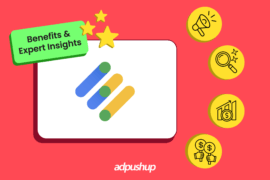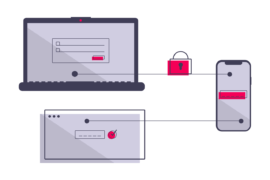Google recently made changes to Ad Manager for running unified auctions and switched to the first-price auction model. With unified auctions, Google wants to simplify ad tech and create a level playing field for all parties. This switch will benefit publishers by making auctions easier to manage.
With this change, every offer from programmatic buyers will compete in the same unified auction, alongside inventory which is directly negotiated with advertisers. An advertising buyer’s bid will not be shared with another buyer before the auction or be able to set the price for another buyer. The buyer that wins the auction pays the price they bid. By simplifying our auction in Ad Manager, we can help make it easier for publishers and app developers to manage and get fair value for their inventory.
Sam Cox, Group Product Manager at Google.
So, What is a Unified Auction?
In a unified auction, all partnered ad networks, ad exchanges, and advertisers get the opportunity to bid on the publisher’s inventory. Each of these partners receives the bid request at the same time. The ad server then selects the highest bidder as the winner and grants the ad impression.
The idea is to run a single auction rather than running multiple DSP- or exchange-level auctions and then sending the bids to the ad server. A unified auction not only brings more demand sources on the table for publishers but also implements the first-price system to increase yield.
Benefits of Unified Auction
A unified auction provides many benefits over both waterfall setup and header bidding. Here are some of them:
- Maximized ad revenue: Publishers can send bid requests to multiple demand partners, increasing the competition for the inventory. The algorithm makes sure that the highest bidder wins the auction. Greater reach and competition lead to higher bids and more revenue.
- Greater demand: The unified auction lets publishers access all kinds of demand sources including DSPs, advertisers, and ad agencies. Along with better CPM rates, more demand sources also unlock more relevant ads for publisher websites, delivering better user experience.
- Transparent auction: This system allows publishers to see auction-level data such as incoming bids and winning bids. With granular reporting, publishers can filter reports by CPM rates, per impression rates, and earning per demand partner to determine the value of their inventory.
Advertisers also get an equal chance to participate in the auction, without having to share their bid price with ad networks and exchanges.
How is it Different from Header Bidding?
Both auction models have the same goal—maximizing demand for the inventory. But they differ in function. Header bidding uses a wrapper to call demand partners and conducts a client-side auction. Whereas, a unified auction is run on the server-side.
Since client-side header bidding runs on users’ browsers, it can increase page latency. On the other hand, a unified auction does not cause latency problems. An example of a unified auction is Google Exchange Bidding (now Open Bidding).
Also, unified auctions are designed to make sure that there is only one bidding session for an available impression. Whereas in header bidding, a bid is selected by running multiple (DSP- and network-level) auctions before the bids are sent to header bidding wrapper for the final round.
Want to know more about Header Bidding? Click Here
The Future of Unified Auction
Google set the stage for unified auctions by combining all of its advertising solutions into Google Ad Manager. Google’s model allows exchanges and DSPs to have equal access to publisher inventories to ensure a fair auction.
This setup mainly benefits the publishers by making their inventories more accessible and hence driving bid competition.
It will be interesting to see if unified auctions will become the next big thing in ad technology, surpassing the current leader—header bidding, with 79% of top Alexa websites using it to monetize their inventories.
AdPushup’s Header Bidding Solution
Merely deploying header bidding in your ad stack isn’t enough. Consistently optimizing it with technical improvements is the need of the hour. This is what AdPushup’s header bidding solution does. Through our multiple optimization features using data science and machine learning, we help publishers maximize their yield.
With our header bidding solution, you get:
- Automatic demand partner selection according to optimum requirements
- Smart timeout management
- Freedom to bring your own demand
- Bid monitoring and discrepancy resolution
Read more about our product capability: Header Bidding

Shubham is a digital marketer with rich experience working in the advertisement technology industry. He has vast experience in the programmatic industry, driving business strategy and scaling functions including but not limited to growth and marketing, Operations, process optimization, and Sales.







